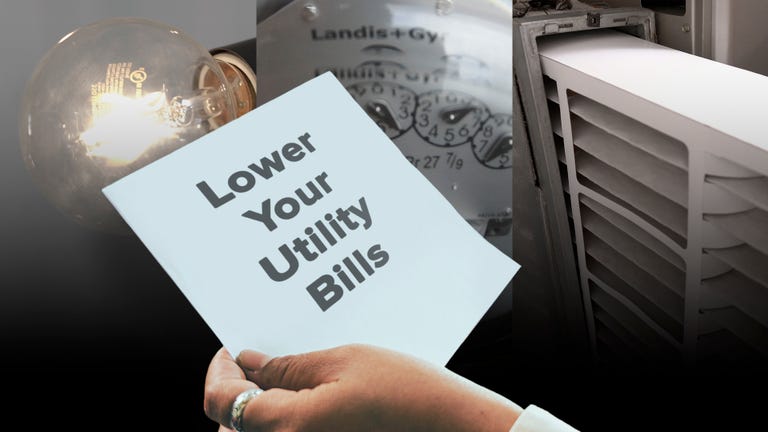Daylight savings time is only a week away, but nasty winter temperatures have hit the US. After setting record highs earlier in the week, the thermometer has plunged in many locales, causing residents to boost the temperature on their thermostats.
While gas and electricity prices are relatively lower this year, the wild temperature drops could lead to additional costs in your monthly heating bill. If you’re looking to save money on your utility bills, one action you can take is to set your thermostat to the correct temperature.
Below, we’ll outline the best temperature to set your smart thermostat to save energy in winter and summer. We’ll explain why it works to manage your home’s climate more efficiently and share a few bonus thermostat tricks and heating habits to reduce your overall usage.
If you’re looking for more energy savings year-round, check out how turning off the lights can save you money, and how weather stripping can contain the heat for under $10.
The best temperature to set your thermostat for winter

According to the US Department of Energy, it’s best to keep your thermostat at 68 degrees Fahrenheit for most of the day during the winter season. For maximum efficiency, you should also designate eight hours per day during which you turn the temperature down by between 7 and 10 degrees. By following this routine, you may again be able to reduce your yearly energy costs by up to 10%.
Depending on your schedule and comfort preferences, you can decide whether you’d prefer to keep your home cooler during the day or at night. Some people prefer turning the heat down at night when they can cozy up under blankets and won’t notice the colder conditions. Plus, sleeping in chillier temperatures may be linked with getting more restful sleep.
For others, it might make more sense to turn the thermostat down during the daytime when they’re at work. Once you’re home, you can crank up the temperature to a more comfortable level.
Read more: You Can Actually Save Money by Using Electricity at These Specific Times
There’s an optimal temp to set your thermostat for summer, too
According to the US Department of Energy, the best technique for staying cool yet minimizing utility costs in summer is to keep your home warmer than usual when no one is home and then set the temperature as high as comfortably possible when home. Energy Star, a program of the US Environmental Protection Agency and the US Department of Energy, suggested that homes be kept at 78 degrees Fahrenheit when home during the day.
It also suggests that the thermostat be set to 82 degrees Fahrenheit when sleeping and 85 degrees Fahrenheit when out of the house for maximum savings — recommendations that were met with scorn and disbelief on social media.
If setting your thermostat to somewhere in the 80s sounds too warm, then a good rule of thumb to follow is to turn your thermostat up 7 to 10 degrees from your normal setting for eight hours a day, so you can save up to 10% a year.
Why your thermostat setting matters
In winter
What makes 68 degrees Fahrenheit the best temperature for winter? It’s on the lower end of comfortable indoor temperatures for some people, but there’s a good reason to keep your home cooler during winter. When your home is set to a lower temperature, it will lose heat more slowly than if the temperature were higher. In other words, keeping your home at a cooler indoor temperature will help it retain heat longer and reduce the amount of energy required to keep the house comfortable. As a result, you’ll save energy and money.
In summer
A common misconception is that setting your air conditioner to a lower-than-normal temperature will cool your home faster. An air conditioner will only really cool your home 15 to 20 degrees cooler than the outdoors; any other setting will not cool your home more and will result in unnecessarily high expenses.
Plus, a higher interior temperature setting in the summer will slow the flow of heat into your home, which results in energy and money savings.

Watch this: Easy Ways to Lower Your Utility Bills and Save Money
How to position your thermostat for maximum efficiency
In addition to following these temperature recommendations, you can maximize your energy efficiency by installing your thermostat in the right place. It’s best to position your thermostat away from drafty areas (near vents, doors or windows) and away from places that receive direct sunlight, as these factors could activate your thermostat unnecessarily. Instead, place it on an interior wall in a well-used area of your home.
Have a heat pump? Keep this in mind
Fiddling with your thermostat multiple times per day isn’t ideal, so it’s best to have a smart thermostat or programmable thermostat that lets you set a schedule and automate temperature changes.
Some smart and programmable thermostats don’t work well with heat pumps — a furnace and AC alternative. If you have a heat pump system, ask your HVAC specialist about buying a special type of thermostat that’s designed for use with your system.
Other ways to reduce energy costs
If you’re frustrated with high utility bills, you might be interested in switching to green energy such as solar power. With solar panels, you can generate power yourself, reducing energy costs and your reliance on the public grid. They’re an eco-friendly alternative to traditional energy sources, providing clean power all year long (including in winter) for your home, business or vehicle.
The bottom line
Being smart about your thermostat settings can make a real difference to your energy consumption year-round. By reducing your home’s temperature to 68 degrees Fahrenheit and under during winter and about 78 degrees Fahrenheit during summer, you can conserve energy and cut down your energy bills for good.




















+ There are no comments
Add yours